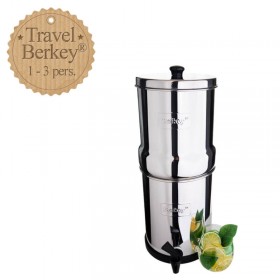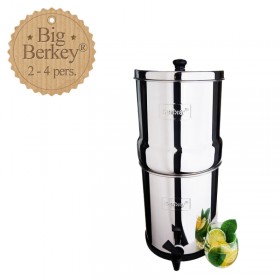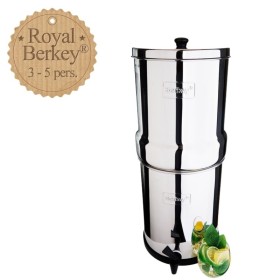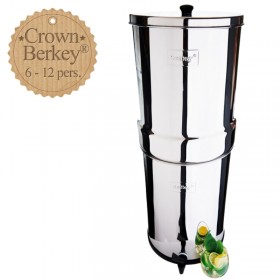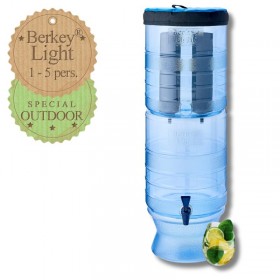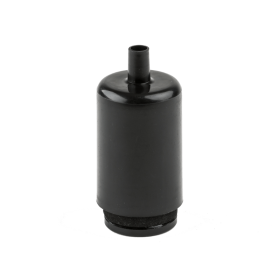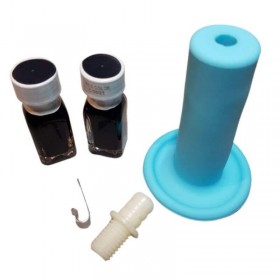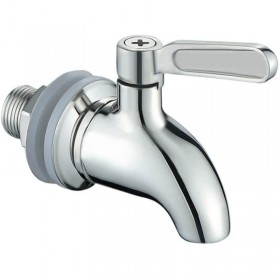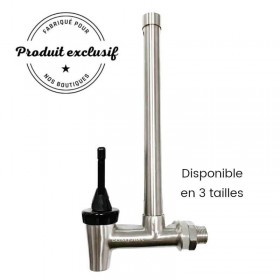Microplastics in tap water: an invisible danger to our health
In recent years, microplastics have become a major health and environmental concern. Invisible to the naked eye, these tiny plastic particles can be found everywhere: in our oceans, in the food we eat, and even in the water we drink. But what about tap water?
What is microplastic?
Microplastics are fragments of plastic measuring less than 5 millimeters. They come mainly from two sources:
- 1. Primary microplastics, which are designed to be small, like the microbeads in cosmetics.
- 2. Secondary microplastics, which result from the degradation of larger pieces of plastic through wear and tear, sunlight or other environmental factors.
These particles are of particular concern because they are persistent in the environment and can end up in water resources.
Why are microplastics found in tap water?
The main cause of microplastics in tap water is the contamination of water resources by textile microfibers and plastic fragments from poorly filtered wastewater. When synthetic garments, such as those made from polyester or nylon, are washed, millions of microfibers are released into the wastewater. These particles, too small to be completely eliminated by treatment plants, end up in the rivers, lakes and groundwater that supply drinking water systems.
In parallel, the degradation of plastics left in the environment contributes to the formation of secondary microplastics, which also reach these water sources via runoff and groundwater pollution. Added to this are particles released by the infrastructure itself, such as PVC pipes, and airborne microplastics deposited in reservoirs and distribution systems. Among these sources, textile microfibers are often identified as the primary cause of microplastics in tap water, as they are released in large quantities and are difficult to remove with current treatment technologies.
To limit their presence in drinking water, solutions such as the use of advanced filters, such as Berkey® filters, are proving essential, complementing an overall reduction in the use of plastics and a modernization of water treatment infrastructures.
What are the health hazards of microplastics?
Although research into the impacts of microplastics on human health is still ongoing, several concerns are emerging:
- Chemical toxicity risk: Microplastics may contain chemical additives or adsorb pollutants present in water, which could have harmful effects on our bodies.
- Endocrine disruptors: Some plastics contain substances like bisphenol A (BPA) or phthalates, known to disrupt the hormonal system.
- Mechanical effects: Ingestion of solid particles, even microscopic ones, could lead to inflammation or impacts that are still poorly understood.
Why is bottled water not a solution to avoid microplastics?
Many people think that bottled water is a solution to avoid the microplastics present in tap water, but this is not the case. Recent studies have shown that bottled water often contains as many, or even more, microplastics than tap water.
These particles mainly come from the bottle manufacturing process, plastic caps and storage conditions, particularly when bottles are exposed to heat or sunlight, which promotes plastic degradation.
In addition to microplastics, bottled water can also contain chemicals such as phthalates or bisphenol A (BPA), compounds associated with endocrine disruption and other harmful health effects. Furthermore, bottled water is a major contributor to global plastic pollution, as a large proportion of bottles are not recycled and end up in oceans or landfills, where they degrade into microplastics.
How to remove microplastics from your tap water?
Berkey® filters feature Black Berkey® purification elements, designed to remove fine particles, including microplastics. These filters operate on a gravity filtration process, using a multi-layer system capable of trapping extremely small particles. Microplastics, often measuring less than 5 millimeters, are effectively captured thanks to the microscopic porosity of the filter elements. This technology eliminates up to 99.9% of the microplastics present in tap water.
Conclusion
Microplastics in tap water represent a growing challenge for our society. Although much remains to be discovered about their real impact, it is essential to act now to reduce our exposure and protect our health. With a Berkey® filtration system, you can be sure of drinking water free of microplastics and other contaminants, while reducing your ecological impact. Discover our range of filters today!
Share this content

